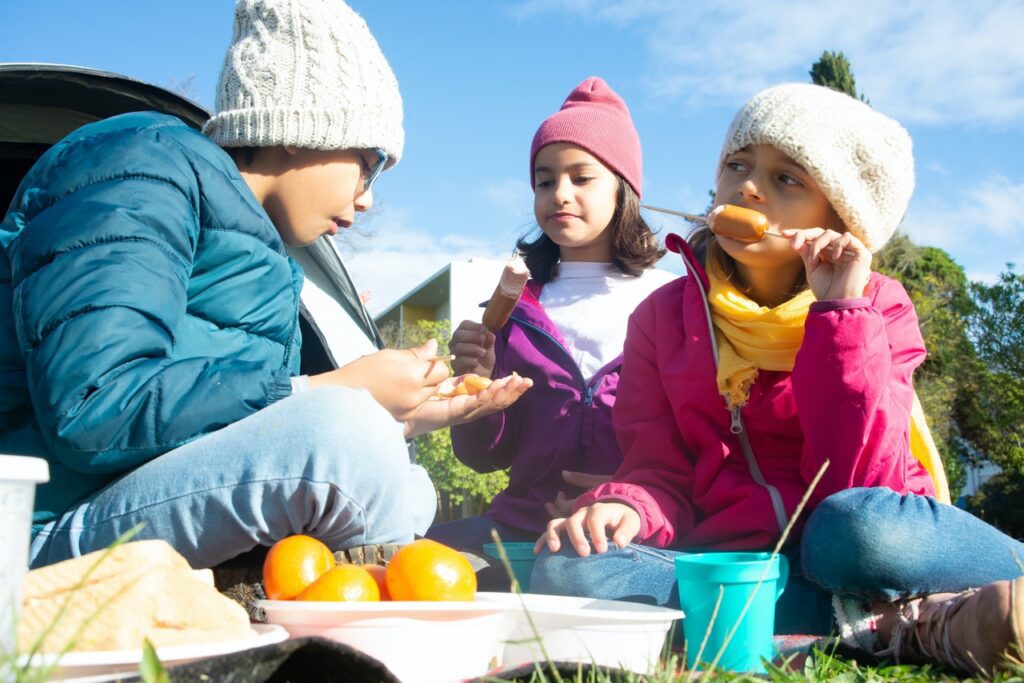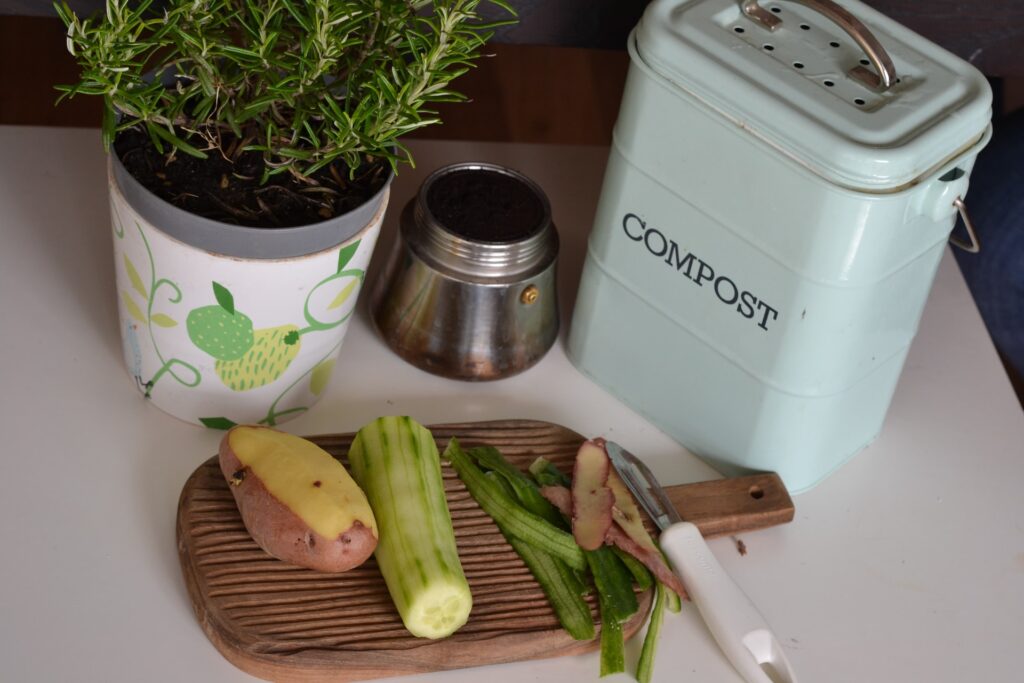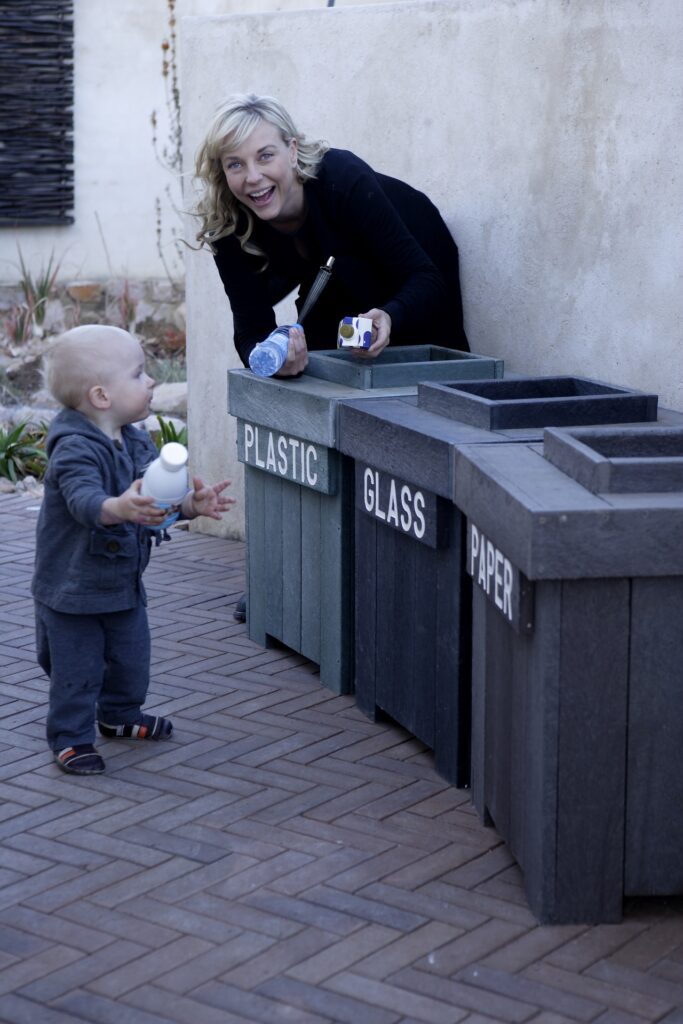The amount of waste we produce is directly linked to our consumption habits. We can no longer afford to test our planet on how much waste it can handle if we want to prevent environmental disaster
Hence, adopting practices that help the environment in our daily lives is an essential skill. The process of learning can start at a very young age. Teaching kids to recycle is of vital importance to secure the health of our planet in the long run. And kids are great advocates for change. As grown-ups, we have the responsibility to guide them and lead by example.
Here you will find some useful ideas on teaching kids about recycling to make the process fun for them and you.
The environmental impact of waist
Waste is a major contributing factor to air pollution, soil and water contamination, and climate changes, all of which directly impact our health and quality of life. When waste is collected, it is transported to landfills. These are considered the last resort in the waste management hierarchy. Still, they are also the most common spot where our leftovers rest.
Landfills produce methane, a potent greenhouse gas that is responsible for climate change. The decomposition of biodegradable waste, such as food and paper, releases microorganisms that create the gas. Methane is second only to carbon dioxide in its potency to trap heat in the earth’s atmosphere for a long time. So, landfills are sources of powerful air pollutants contaminating the soil and water.
Recycling is an effective way in which all of us can show care for our planet. Although innovative strategies that combat climate change breed results to a degree, individual efforts also matter. Teaching kids to recycle from a young age is helping them grow into conscientious individuals with aspirations to create better circumstances and live better lives on the Blue Planet, the only home we all have.

The positive effects of teaching kids to recycle
Encouraging your children to recycle is an opportunity to upskill them and create responsible adults versed in sustainability. This makes better chances for them to have a decent planet to live on. Recycling has many positive effects on the environment, and whether it is directly or indirectly, it surely affects our health and overall well-being.
- Reducing landfill: With recycling, materials are reprocessed into new products. As a result, the amount of waste sent to landfills reduces, which has an impact on decreasing the production and emission of harmful gasses.
- Resource conservation: To create new products, fresh and raw materials need to be extracted from the earth. Recycling helps convert existing materials into new products. This helps preserve natural habitats by decreasing the need for mining and forestry to extract new materials.
Energy-saving: Recycling is providing industry-ready materials for producing new goods. This requires significantly less energy consumption, which decreases the harmful gasses emission by limiting the need for transport, extraction, and refinement of raw materials.
- Thus, teaching kids to recycle has a long-term effect on energy preservation, and it minimizes the necessity of pollution for production purposes.
Recycling is pretty simple, and luckily, the three Rs of waste management – Reduce, Reuse, Recycle – are easy to introduce and incorporate into our daily lives. Here is how to do it.
Reduce
The first step to recycling is to use less than we currently do. Before you buy something, ask yourself if you need it. By reducing the number of things you purchase, you stop the problem at its source. This approach will also help you declutter your household, and keeping it neat and tidy will be effortless in the long run.
The kitchen is a great place to start. How to avoid wasting food is an important lesson to learn. You can safely store leftover food and get creative in the kitchen by incorporating leftovers into a new recipe. You can use products past their best, like bananas, for instance, to make banana bread. Your kids will surely love the inspiring baking lesson.
Reuse
When you need to toss something, try to think if there is any other way to use it. Repurposing items before throwing them away will give your children an excellent example of sustainability. With this concept, they will quickly learn that making new items from recycled ones takes fewer resources.
Besides, upcycling is a great way to develop your children’s creativity. For example, if you have just moved into a new home, reuse boxes after you are done unpacking. Moving boxes are an ideal material for fun projects your kids will enjoy. You can help them build a robot from the packing materials you would otherwise dispose of or send out for recycling. Similarly, you can repurpose plastic bottles by turning them into bird feeders. DIY projects are a great way to reuse items and give them a new life.

Composting
Compost is an organic material that supports the growth of plants when added to the soil. Composting at home is a brilliant way of keeping biodegradable waste, such as food scraps or plant trimmings, away from landfills.
To teach your kids more about recycling methods, you can start a compost pile in your backyard. You can compost indoors in a specialized bin that you can purchase in a gardening supplies store as well. You need the following three ingredients to start a compost pile:
- Brown materials – such as twigs, branches, and dry leaves provide carbon.
- Greens – like grass, fruits, and vegetable scraps supply your compost with nitrogen.
- Water – it helps break down the organic materials.
Once you create the basics, show your kids what to toss in the compost pile – eggshells, tea bags, banana and orange peels, and the list goes on.
Besides reducing methane emissions from landfills and your carbon footprint, compost is an excellent alternative for chemical fertilizers and one of the many ways to help the environment.
The little things make a big difference
As a busy parent, you may think that you lack time to teach your children about recycling. However, if you make certain habits part of the daily routine, recycling will quickly become second nature. Ingraining good habits at an early age is one way to ensure that our kids grow up with an appreciation for preserving natural resources and a healthy planet for future generations.

Give priority to eco-friendly products and services
Everything we do has an environmental footprint. With the growing concerns over the health of our planet, eco-consciousness among businesses and consumers is constantly on the rise. From moving companies to luxury brands and manufacturers, many take proactive measures to curtail negative impacts on the environment. As experts from Prime Movers NC tell us, the demand for eco-friendly services and products is growing, which is a silver lining for the earth’s future. Hence, choose to purchase environmentally friendly products or use services that will help you minimize your carbon footprint.
The bottom line is: you need to lead by example and show your kids how to secure the well-being of our planet by making the right choices. By implementing some simple changes into your regular routine, teaching kids to recycle will be effortless. And the earth will be thankful. Remember, there is no planet B.
Article by Sally Norton
Sally is a proud member of Alejandra’s Life Family Team




